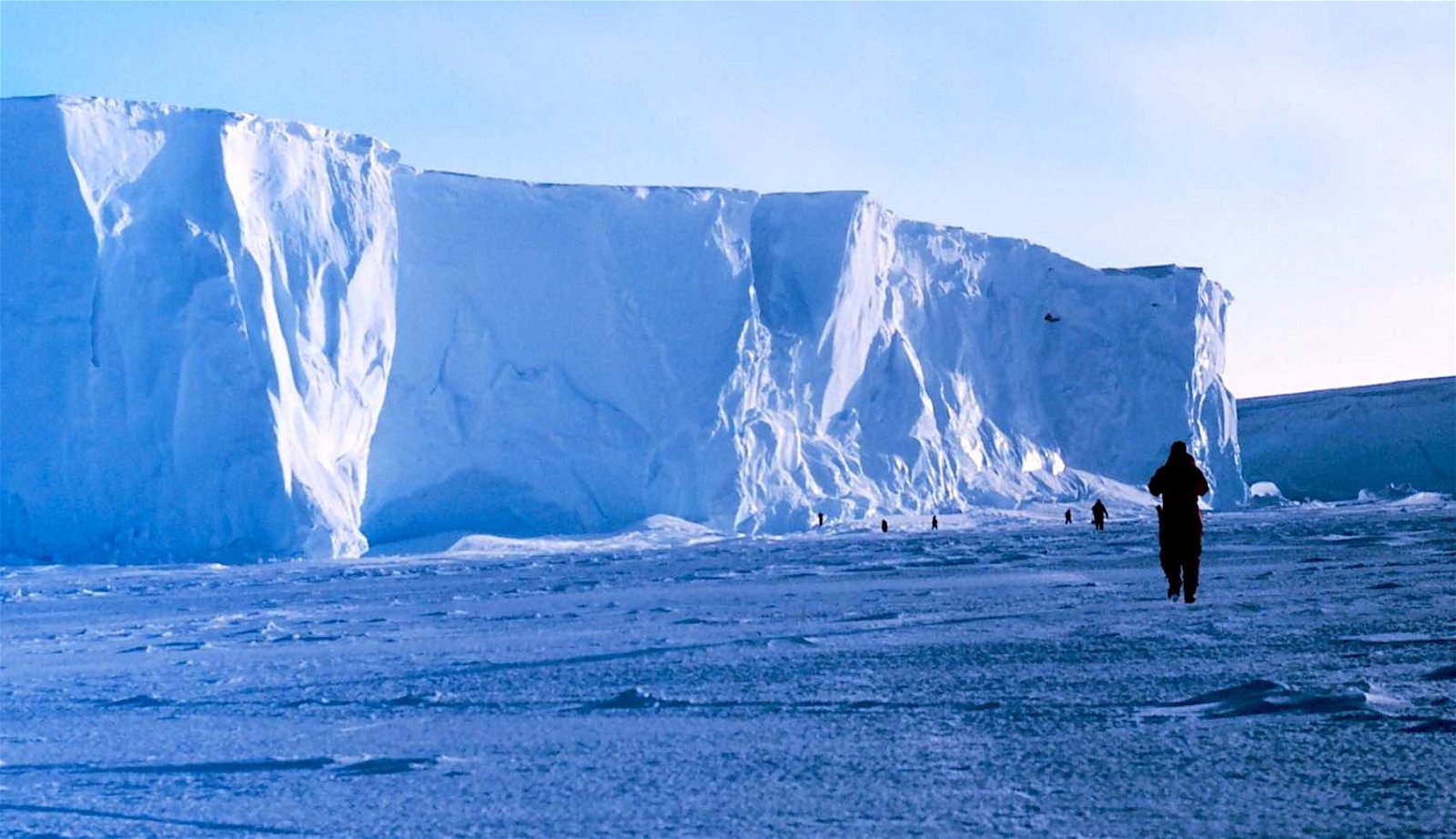Researchers have discovered something happening each day at Antarctica’s largest ice shelf that has previously gone unnoticed, despite more than a century of human activity in the area.
According to a new study, the Ross Ice Shelf is jolted daily by the movements of ice streams, which is affecting its stability. The research, undertaken by a team of scientists from Washington University in St. Louis, is helping to reveal new insights into the dynamics of ice shelves and their relationship to ice streams. They say this points to potential problems regarding the impact of daily ice shelf movement and its relationship to global sea levels.
According to new research, ice streams act like conveyor belts and allow most of the ice and sediment debris collected by these massive glaciers to make their way toward the ocean over time. The research found that the Ross Ice Shelf is jostled sometimes more than once each day due to such processes.
“We found that the whole shelf suddenly moves about 6 to 8 centimeters (or 3 inches) once or twice a day, triggered by a slip on an ice stream that flows into the ice shelf,” according to Doug Wiens, the Robert S. Brookings Distinguished Professor of earth, environmental and planetary sciences in Arts & Sciences at Washington University.
“These sudden movements could potentially play a role in triggering icequakes and fractures in the ice shelf,” Wiens said.
Of obvious concern to researchers like Wiens is the way climate change is affecting processes that impact the stability of Antarctica’s ice shelves. These shelves help to hold back glaciers and ice streams by slowing their path toward the ocean, where they eventually melt once they meet the water.
If an ice shelf collapses, glaciers are free to flow faster, reducing the amount of ice accumulation on Antarctica and contributing to rising sea levels. However, the phenomenon that researchers like Wiens say is contributing to such daily movement is subtle and has likely gone undetected for more than a century.
“One would not detect the movement just by feeling it,” Wiens said in a statement. “The movement occurs over a time period of several minutes, so it is not perceptible without instrumentation. That’s why the movement has not been detected until now, even though people have been walking and camping on the Ross Ice Shelf since the time of the great explorers Robert F. Scott and Roald Amundsen.”
Sudden ice movement, which researchers refer to as slip events, is the primary cause of the Ross Ice Shelf’s movement. According to Wiens and his team, a massive 100-square-kilometer section of the Whillans Ice Stream remains stationary as the rest of the ice stream gradually moves forward.
At least once a day, the large section advances against the Ross Ice Shelf, which can result in movement of as much as several inches within just a few minutes.
While past research has already shown that over the past 50 years, several ice streams are moving more quickly with time, that isn’t the case for all of them. Based on seismographic data, some ice streams are actually slowing down, and scientists are currently working to harness a better understanding of what governs their motion.
“I’ve published several papers about the Whillans Ice Stream slip events in the past but had not discovered that the whole Ross Ice Shelf also moves until now,” Wiens said.
Presently, Wiens and his colleagues don’t think slip events are necessarily a result of anthropogenic-induced climate changes, and there are various theories about what causes them. One involves the idea that water lost in the bed of the Whillans Ice Stream causes it to become more “sticky.” Also, pressures associated with slip events are similar to those that can lead to what are known as icequakes.
“At this point, icequakes and fractures are just part of the normal life of the ice shelf,” Wiens said in a statement. “There is a worry that the Ross Ice Shelf will someday disintegrate since other smaller and thinner ice shelves have done so.
“We also know that the Ross Ice Shelf disintegrated during the last interglacial period,” Wiens adds, which occurred close to 120,000 years ago, adding that this resulted in “rapid ice loss to the other glaciers and ice streams feeding into it.”
Wiens and his team’s new study, “Ross Ice Shelf Displacement and Elastic Plate Waves Induced by Whillans Ice Stream Slip Events,” was published in the journal Geophysical Research Letters.
Micah Hanks is the Editor-in-Chief and Co-Founder of The Debrief. He can be reached by email at micah@thedebrief.org. Follow his work at micahhanks.com and on X: @MicahHanks.

